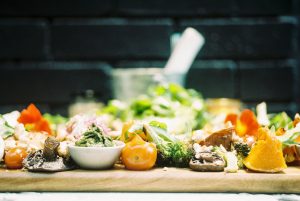The art of crafting exceptional tasting menus is an important skill for any chef. Creating successful tasting menus requires a unique combination of creativity, skill, and attention to detail. From selecting the right ingredients to designing beautiful presentations, the goal is to create a unique and enjoyable dining experience.
Whether you’re a professional chef or a home cook looking to add a special touch to your dinner parties, a well-crafted tasting menu is a brilliant way to surprise and delight your guests. With a few helpful tips and tricks, you can learn the art of creating unforgettable tasting menus and become the master chef of your kitchen.
Know Your Ingredients
To successfully create an exceptional tasting menu for your guests, you must have an understanding of the ingredients you’ll be using. Knowing the flavors and textures of each ingredient is essential when combining them into something both delicious and visually appealing. Plus, understanding the ingredients will help give you the tools you need to craft creative dishes that will speak to each diner’s individual palate.
You can learn about an ingredient’s flavors and textures by using your senses. Sample the ingredient raw and cooked to get a better grasp on how it will react with other ingredients and flavors. Take what you’ve learned and apply it to both hot and cold dishes. You may also read up on different regions’ recipes and cooking techniques, as this can provide insight into potential flavor combinations.
Think Outside the Box
When crafting a tasting menu, many chefs tend to stick to a classic format: a few starters, a meat dish, a fish dish, a cheese plate, and a dessert. But why not think outside the box and come up with dishes that are unique and exciting? From a deconstructed soup to a deconstructed cheese plate, there are plenty of opportunities to think outside the box. Take inspiration from the ingredients and your own cooking style and come up with something unique. Often this will be met with a great deal of enthusiasm from your diners.
When you’re ready to plan your dishes, set out each ingredient and think of ways to incorporate them all into your menu. Don’t be afraid to experiment and play around with different flavors and techniques. Be sure take note of any techniques or flavors that you liked or didn’t like, as this will help you refine your menu.
Perfect Your Presentation
Creating a delicious tasting menu is only half of the battle – presentation is equally important. To really wow your guests, you must consider how the food will be plated and presented. Think of plating as a form of art – each element should be arranged carefully to maximize visual appeal and create an enjoyable dining experience.
Do some research and learn about the latest plating trends and techniques. Additionally, practice your plating skills and take photos of your dishes to get an idea of how they look on the plate. You can also consult with other chefs, as they will likely be able to give you some great tips and ideas.
Plan Ahead
A tasting menu can be a lot of work, so it’s important to plan ahead. Make a list of the ingredients you’ll need to get started and map out a timeline for each dish. Give yourself plenty of time for the research and development process – this will ensure that you’re not rushed and can take your time to craft a menu that’s truly exceptional.
Additionally, when planning the dishes, make sure you consider the diner’s dietary restrictions or food allergies. Many people have dietary restrictions or allergies, so it’s important to plan ahead and make sure your dishes can accommodate any restrictions.
Conclusion
Crafting an exceptional tasting menu is a great way to wow your guests. To successfully pull off a successful tasting menu, you must have an understanding of your ingredients, think outside the box, take the time to perfect your presentation, and plan ahead. With the right combination of creativity and skill, you’ll be able to craft a unique and delicious menu that will undoubtedly please your guests.
Frequently Asked Questions
1. What techniques are used to create a good tasting menu?
Creating a menu with great tastes involves carefully balancing flavors, textures, colors, and nutritional variety. It’s also important to consider flavor combinations that patrons may not be used to, as well as presentation and portion sizes. It’s beneficial to have an experienced chef working with the menu to ensure it’s balanced and memorable.
2. How can I add a unique element to my menu?
To add a unique element to your menu, you can incorporate seasonal ingredients, experiment with variations on a classic dish, or source locally produced products. You can also add cultural elements from other countries and regions to create a one-of-a-kind menu.
3. What steps can I take to design a successful menu?
Successful menu design involves establishing a clear concept, understanding customer needs and interests, ensuring variety in the offerings, and curating a list of dishes that will attract and delight customers.
4. How do I know what flavours go together?
The art of creating delicious flavour combinations is acquired through both experience and research. It takes some trial-and-error to develop a “flavor palette” and understand which flavors and ingredients go well together. It can be helpful to familiarize yourself with the basics of seasoning, such as salt, sweet, sour, bitter, and umami.
5. How can I keep my menu up-to-date and relevant?
You can keep your menu up-to-date and relevant by regularly introducing new dishes that reflect customer needs and tastes. In addition, you should occasionally rotate some of your dishes with seasonal dishes or specials that are tailored to the current season or trends in the culinary world. This will ensure your menu remains fresh and interesting.




